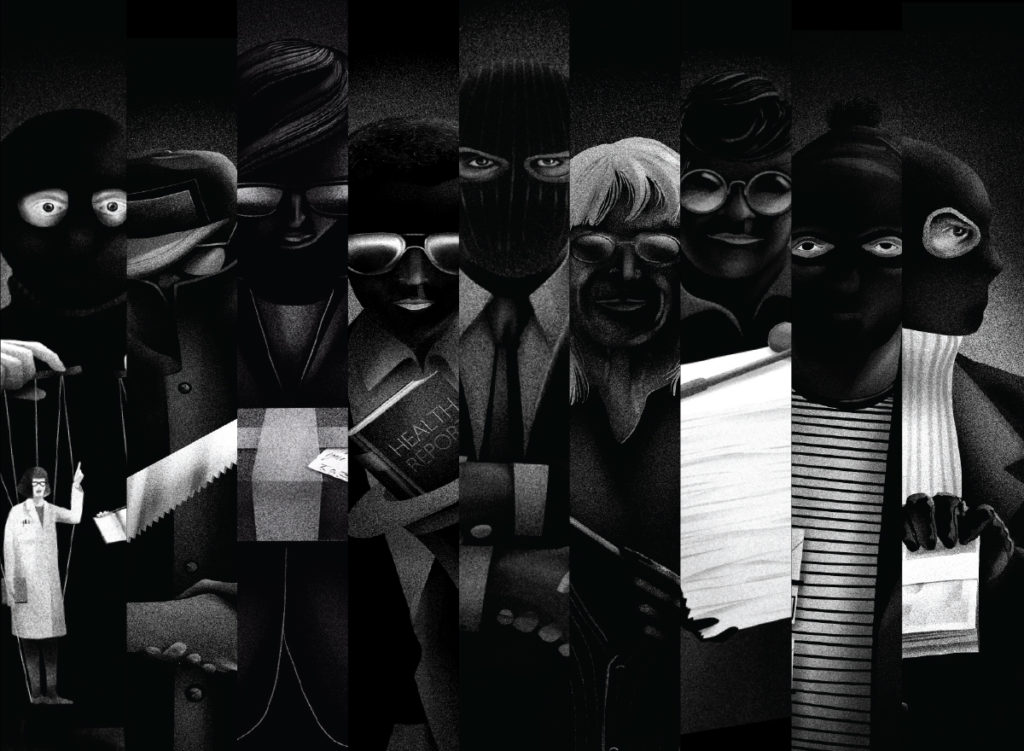
The tobacco industry uses a number of tactics to keep existing people hooked to its deadly products and lure a new generation of users. A new report, “The Crooked Nine: Nine Ways the Tobacco Industry Undermines Health Policy,” released by STOP (Stopping Tobacco Organizations and Products) exposes nine ways the industry tries to make sure regulations are weak or ineffective. The report provides examples of how the same strategies have been used across all regions of the world. We spoke to Judith Mackay, who contributed to the report and is also a Senior Advisor at Vital Strategies and STOP, to learn more.
1. Who should read “Crooked Nine” and why?
This is a report for anyone interested in health policy, but especially for those who are making or advocating for better tobacco regulations. Many countries still do not realize that a major reason tobacco control legislation gets delayed or weakened is because of industry interference. Due to the diminishing sales of conventional cigarettes and the irrefutable science about the harms of tobacco, the industry has redoubled its efforts with aggressive marketing and obfuscation.
Understanding the methods the tobacco companies rely on is the first step to launching an effective challenge to the industry. The report outlines the most common tactics used by the industry, and includes examples and case studies from countries around the world.
2. What is the most common tactic the industry uses to undermine health policy?
Nowadays, it is their direct challenge to proposed government policy and legislation, including tobacco tax increases, by challenging the health evidence. They misrepresent the success of such policies in other countries, claiming they will not work and that they will even have negative consequences.
The industry calls upon an army of commercial colleagues including legal and public relations firms, advertising agencies, insurance agencies, as well as front groups, think tanks, and many more, to challenge measures that work.
3. Do you have personal experience with any of the nine industry tactics?
Yes, frequently. Over the last 35 years I’ve worked on this issue, I’ve encountered all of the nine.
4. Which tactics are the hardest to spot?
Discussions take place behind closed doors, particularly in countries like Japan with national tobacco monopolies, where the tobacco industry is known to be involved in the legislative or decision-making process. No one reveals that a meeting even took place, never mind the actual topic and conversation.
5. What government agencies are most at risk from the industry’s tactics?
The industry’s influence is far reaching. In the civil service, tobacco companies have tried to interfere with the work of the ministries of finance, trade, industry, commerce and customs as well as the ministry of health. In the legislature, elected officials, as well as entire political parties may be vulnerable.
6. What advice do you have for governments to stop industry interference?
The best way for governments to protect their policies is implementing Article 5.3 of the WHO Framework Convention on Tobacco Control, an international treaty which outlines steps for governments trying to control the tobacco epidemic. The treaty outlines steps that can be incorporated into the civil service code of conduct regulations, as some countries have done. And broadly speaking, governments must insist on transparency from all of their branches, as well as civil society, when it comes to dealing with the industry.
7. What did you learn from your work on this report?
The strategies and tactics used by the tobacco industry are remarkably similar between all countries in the world, independent of geographic or population size, GDP, stage of economic development, government system, and so on. I also learned that virtually all challenges to legislation by the tobacco industry are unsuccessful, although they often delay and sometimes weaken a bill. This is cause for both hope and vigilance.
8. Why is India an important case study to understand and examine?
India is the world’s largest democracy and home to huge numbers of millions of tobacco users. The Indian government and civil society provide many examples of resisting tobacco industry interference. For instance, in 2018, after a three-year fight, the Supreme Court overturned industry-backed legislation that rolled back graphic pictorial warnings on cigarette packages from a mandated 85% to 50%.
9. How is STOP working to tackle industry interference?
Stopping Tobacco Organizations and Products (STOP) is the first of its kind dedicated to rigorously exposing the tobacco industry’s efforts to derail tobacco control and hook a new generation of users. As an industry watchdog, STOP exposes tobacco industry interference around the world. Through robust monitoring, research and reporting, STOP holds the tobacco industry accountable and supports efforts around the world to address industry interference in policy. The Crooked Nine is our first major report, and we have more to look forward to.
 Judith Mackay is a British-born and Hong Kong–based medical doctor and international tobacco control advocate who has led a campaign against tobacco in Asia since 1984. Mackay is a Senior Advisor at Vital Strategies, working mainly in low and middle-income countries.
Judith Mackay is a British-born and Hong Kong–based medical doctor and international tobacco control advocate who has led a campaign against tobacco in Asia since 1984. Mackay is a Senior Advisor at Vital Strategies, working mainly in low and middle-income countries.
About STOP (Stopping Tobacco Organizations and Products)
STOP is a global tobacco industry watchdog whose mission is to expose the tobacco industry strategies and tactics that undermine public health. STOP is a partnership between The Tobacco Control Research Group at the University of Bath, The Global Center for Good Governance in Tobacco Control, The Union and Vital Strategies. Learn more at exposetobacco.org.